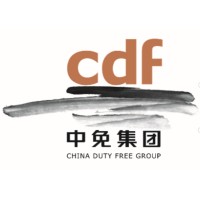
China Duty Free Group Company Cyber Security Posture
cdfg.com.cnChina Duty Free Group Co., Ltd. (hereinafter referred to as “CDFG”) was established in 1984. It is a state-owned franchise company authorized by the State Council to carry out duty free business nationwide. After nearly 40 years of rapid development, CDFG has successively established long-term stable cooperative relations with more than 1,400 international well-known brands around the world, and set up over 200 duty free shops in more than 30 provinces, cities, autonomous regions, special administrative regions and also Cambodia, covering airports, on-board aircrafts, borders, passenger stations, railway stations, foreign cruise supply, diplomatists, cruises and local (offshore and outbound) duty free shops. Its main sales channels cover large domestic hub airports in Beijing, Shanghai, Guangzhou, Chengdu and Hangzhou, and international airports in Hong Kong SAR and Macao SAR in the Asia Pacific region, downtown duty free shops in Beijing, Shanghai, Qingdao, Xiamen, Dalian, Hong Kong SAR and Macao SAR, Costa Atlantic Cruise and Cruise Piano Land, and major domestic border ports and Hainan Island. It has developed into a travel retailer with the most types of duty free shops and the most retail outlets in a single country in the world, providing duty free products and services to nearly 200 million domestic and foreign tourists every year.
CDFG Company Details
china-duty-free-group
10,001+ employees
0
452
Retail
cdfg.com.cn
Scan still pending
CHI_2331937
In-progress
Between 800 and 900
This score is AI-generated and less favored by cyber insurers, who prefer the TPRM score.
 CDFG Global Score
CDFG Global Score.png)

China Duty Free Group Company Scoring based on AI Models
| Model Name | Date | Description | Current Score Difference | Score |
|---|---|---|---|---|
| AVERAGE-Industry | 03-12-2025 | This score represents the average cybersecurity rating of companies already scanned within the same industry. It provides a benchmark to compare an individual company's security posture against its industry peers. | N/A | Between 800 and 900 |
China Duty Free Group Company Cyber Security News & History
| Entity | Type | Severity | Impact | Seen | Url ID | Details | View |
|---|
China Duty Free Group Company Subsidiaries

China Duty Free Group Co., Ltd. (hereinafter referred to as “CDFG”) was established in 1984. It is a state-owned franchise company authorized by the State Council to carry out duty free business nationwide. After nearly 40 years of rapid development, CDFG has successively established long-term stable cooperative relations with more than 1,400 international well-known brands around the world, and set up over 200 duty free shops in more than 30 provinces, cities, autonomous regions, special administrative regions and also Cambodia, covering airports, on-board aircrafts, borders, passenger stations, railway stations, foreign cruise supply, diplomatists, cruises and local (offshore and outbound) duty free shops. Its main sales channels cover large domestic hub airports in Beijing, Shanghai, Guangzhou, Chengdu and Hangzhou, and international airports in Hong Kong SAR and Macao SAR in the Asia Pacific region, downtown duty free shops in Beijing, Shanghai, Qingdao, Xiamen, Dalian, Hong Kong SAR and Macao SAR, Costa Atlantic Cruise and Cruise Piano Land, and major domestic border ports and Hainan Island. It has developed into a travel retailer with the most types of duty free shops and the most retail outlets in a single country in the world, providing duty free products and services to nearly 200 million domestic and foreign tourists every year.
Access Data Using Our API

Get company history
.png)
CDFG Cyber Security News
White House moves to exclude Chinese e-commerce from duty-free import
US Customs and Border Protection on Friday proposed that low-value imports no longer qualify for duty-free entry if the products are subject to tariffs.
China Cybersecurity and Data Protection: Monthly Update - March 2025 Issue
This newsletter summarises the latest developments in cybersecurity and data protection in China with a focus on the legislative, ...
Banning TikTok: Turning point for U.S. data security or threat to free speech?
The United States government is poised to issue a ban on TikTok, one of the most popular social media platforms in the world.
Trouble in China's shopping paradise as Hainan duty-free spending tumbles
Duty-free spending slumped 29.3% last year in China's island province of Hainan, where global luxury players from LVMH to Kering have set up ...
Trump administration retreats in fight against Russian cyber threats
The Trump administration has publicly and privately signaled that it does not believe Russia represents a cyber threat against US national ...
Cybersecurity, government experts are aghast at security failures in DOGE takeover
Elon Musk's takeover of key systems across the government is ignoring decades of laws, regulations and procedures, experts told CyberScoop.
Terms and Conditions Apply: Regulating Chinese EV Manufacturing Investment in Europe
Outlook. The regulatory uncertainty surrounding the EU's approach to Chinese investments in the EV sector is already influencing FDI decisions.
How Chinese Hackers Graduated From Clumsy Corporate Thieves to Military Weapons
Chinese hackers had gained the ability to shut down dozens of U.S. ports, power grids and other infrastructure targets at will, Jake Sullivan ...
Case study: How an insolvent travel sector giant got back on track
EY teams steered international conglomerate HNA Group successfully through one of China's largest corporate restructurings.

CDFG Similar Companies

Bunnings
We are the leading retailer of home improvement and outdoor living products in Australia & New Zealand and a major supplier to project builders, commercial tradespeople and the housing industry. Our ambition is to provide our customers with the widest range of home improvement products in accordanc

Clicks Group
As a leader in the healthcare market, Clicks Group is committed to increasing access to affordable primary healthcare for all South Africans through its Clicks Retail pharmacy, pharmaceutical wholesale and distribution businesses. Founded nearly 55 years ago in 1968, Clicks Group is the country’s

americanas s.a.
We are Americanas, one of the largest retailers in the country, with over 95 years of history. Our brand, loved by Brazilians, aims to simplify and improve the lives of families. The integration of more than 1,600 stores across all states, along with an e-commerce platform that complements the physi

SPAR South Africa
There’s something different about shopping at SPAR, that’s because we’ve created a culture of caring and community to ensure our customers have a consistently enjoyable shopping experience in a uniquely friendly and family orientated store. Nothing means more to us than our valued customers and we

Axfood
Axfood's purpose is to create more quality of life for everyone. Our family of companies includes the store chains Willys and Hemköp as well as Tempo, Handlar’n and Matöppet. B2B sales are handled through Snabbgross, and our support company Dagab is responsible for the Group’s product developm

Lenta
A high growth, distinctive hypermarket model Lenta is one of the largest retail chains in Russia and the country's second largest hypermarket chain. The company was founded in 1993 in St. Petersburg. Lenta operates 144 hypermarkets in 71 cities across Russia and 41 supermarkets in Moscow and St.

Frequently Asked Questions (FAQ) on Cybersecurity Incidents
CDFG CyberSecurity History Information
Total Incidents: According to Rankiteo, CDFG has faced 0 incidents in the past.
Incident Types: As of the current reporting period, CDFG has not encountered any cybersecurity incidents.
Total Financial Loss: The total financial loss from these incidents is estimated to be {total_financial_loss}.
Cybersecurity Posture: The company's overall cybersecurity posture is described as China Duty Free Group Co., Ltd. (hereinafter referred to as “CDFG”) was established in 1984. It is a state-owned franchise company authorized by the State Council to carry out duty free business nationwide. After nearly 40 years of rapid development, CDFG has successively established long-term stable cooperative relations with more than 1,400 international well-known brands around the world, and set up over 200 duty free shops in more than 30 provinces, cities, autonomous regions, special administrative regions and also Cambodia, covering airports, on-board aircrafts, borders, passenger stations, railway stations, foreign cruise supply, diplomatists, cruises and local (offshore and outbound) duty free shops. Its main sales channels cover large domestic hub airports in Beijing, Shanghai, Guangzhou, Chengdu and Hangzhou, and international airports in Hong Kong SAR and Macao SAR in the Asia Pacific region, downtown duty free shops in Beijing, Shanghai, Qingdao, Xiamen, Dalian, Hong Kong SAR and Macao SAR, Costa Atlantic Cruise and Cruise Piano Land, and major domestic border ports and Hainan Island. It has developed into a travel retailer with the most types of duty free shops and the most retail outlets in a single country in the world, providing duty free products and services to nearly 200 million domestic and foreign tourists every year..
Detection and Response: The company detects and responds to cybersecurity incidents through {description_of_detection_and_response_process}.
Incident Details
Incident 1: Ransomware Attack
Title: {Incident_Title}
Description: {Brief_description_of_the_incident}
Date Detected: {Detection_Date}
Date Publicly Disclosed: {Disclosure_Date}
Date Resolved: {Resolution_Date}
Type: {Type_of_Attack}
Attack Vector: {Attack_Vector}
Vulnerability Exploited: {Vulnerability}
Threat Actor: {Threat_Actor}
Motivation: {Motivation}
Incident 2: Data Breach
Title: {Incident_Title}
Description: {Brief_description_of_the_incident}
Date Detected: {Detection_Date}
Date Publicly Disclosed: {Disclosure_Date}
Date Resolved: {Resolution_Date}
Type: {Type_of_Attack}
Attack Vector: {Attack_Vector}
Vulnerability Exploited: {Vulnerability}
Threat Actor: {Threat_Actor}
Motivation: {Motivation}
Common Attack Types: As of now, the company has not encountered any reported incidents involving common cyberattacks.
Identification of Attack Vectors: The company identifies the attack vectors used in incidents through {description_of_identification_process}.
Impact of the Incidents
Incident 1: Ransomware Attack
Financial Loss: {Financial_Loss}
Data Compromised: {Data_Compromised}
Systems Affected: {Systems_Affected}
Downtime: {Downtime}
Operational Impact: {Operational_Impact}
Conversion Rate Impact: {Conversion_Rate_Impact}
Revenue Loss: {Revenue_Loss}
Customer Complaints: {Customer_Complaints}
Brand Reputation Impact: {Brand_Reputation_Impact}
Legal Liabilities: {Legal_Liabilities}
Identity Theft Risk: {Identity_Theft_Risk}
Payment Information Risk: {Payment_Information_Risk}
Incident 2: Data Breach
Financial Loss: {Financial_Loss}
Data Compromised: {Data_Compromised}
Systems Affected: {Systems_Affected}
Downtime: {Downtime}
Operational Impact: {Operational_Impact}
Conversion Rate Impact: {Conversion_Rate_Impact}
Revenue Loss: {Revenue_Loss}
Customer Complaints: {Customer_Complaints}
Brand Reputation Impact: {Brand_Reputation_Impact}
Legal Liabilities: {Legal_Liabilities}
Identity Theft Risk: {Identity_Theft_Risk}
Payment Information Risk: {Payment_Information_Risk}
Average Financial Loss: The average financial loss per incident is {average_financial_loss}.
Commonly Compromised Data Types: The types of data most commonly compromised in incidents are {list_of_commonly_compromised_data_types}.
Incident 1: Ransomware Attack
Entity Name: {Entity_Name}
Entity Type: {Entity_Type}
Industry: {Industry}
Location: {Location}
Size: {Size}
Customers Affected: {Customers_Affected}
Incident 2: Data Breach
Entity Name: {Entity_Name}
Entity Type: {Entity_Type}
Industry: {Industry}
Location: {Location}
Size: {Size}
Customers Affected: {Customers_Affected}
Response to the Incidents
Incident 1: Ransomware Attack
Incident Response Plan Activated: {Yes/No}
Third Party Assistance: {Yes/No}
Law Enforcement Notified: {Yes/No}
Containment Measures: {Containment_Measures}
Remediation Measures: {Remediation_Measures}
Recovery Measures: {Recovery_Measures}
Communication Strategy: {Communication_Strategy}
Adaptive Behavioral WAF: {Adaptive_Behavioral_WAF}
On-Demand Scrubbing Services: {On_Demand_Scrubbing_Services}
Network Segmentation: {Network_Segmentation}
Enhanced Monitoring: {Enhanced_Monitoring}
Incident 2: Data Breach
Incident Response Plan Activated: {Yes/No}
Third Party Assistance: {Yes/No}
Law Enforcement Notified: {Yes/No}
Containment Measures: {Containment_Measures}
Remediation Measures: {Remediation_Measures}
Recovery Measures: {Recovery_Measures}
Communication Strategy: {Communication_Strategy}
Adaptive Behavioral WAF: {Adaptive_Behavioral_WAF}
On-Demand Scrubbing Services: {On_Demand_Scrubbing_Services}
Network Segmentation: {Network_Segmentation}
Enhanced Monitoring: {Enhanced_Monitoring}
Incident Response Plan: The company's incident response plan is described as {description_of_incident_response_plan}.
Third-Party Assistance: The company involves third-party assistance in incident response through {description_of_third_party_involvement}.
Data Breach Information
Incident 2: Data Breach
Type of Data Compromised: {Type_of_Data}
Number of Records Exposed: {Number_of_Records}
Sensitivity of Data: {Sensitivity_of_Data}
Data Exfiltration: {Yes/No}
Data Encryption: {Yes/No}
File Types Exposed: {File_Types}
Personally Identifiable Information: {Yes/No}
Prevention of Data Exfiltration: The company takes the following measures to prevent data exfiltration: {description_of_prevention_measures}.
Handling of PII Incidents: The company handles incidents involving personally identifiable information (PII) through {description_of_handling_process}.
Ransomware Information
Incident 1: Ransomware Attack
Ransom Demanded: {Ransom_Amount}
Ransom Paid: {Ransom_Paid}
Ransomware Strain: {Ransomware_Strain}
Data Encryption: {Yes/No}
Data Exfiltration: {Yes/No}
Ransom Payment Policy: The company's policy on paying ransoms in ransomware incidents is described as {description_of_ransom_payment_policy}.
Data Recovery from Ransomware: The company recovers data encrypted by ransomware through {description_of_data_recovery_process}.
Regulatory Compliance
Incident 1: Ransomware Attack
Regulations Violated: {Regulations_Violated}
Fines Imposed: {Fines_Imposed}
Legal Actions: {Legal_Actions}
Regulatory Notifications: {Regulatory_Notifications}
Incident 2: Data Breach
Regulations Violated: {Regulations_Violated}
Fines Imposed: {Fines_Imposed}
Legal Actions: {Legal_Actions}
Regulatory Notifications: {Regulatory_Notifications}
Regulatory Frameworks: The company complies with the following regulatory frameworks regarding cybersecurity: {list_of_regulatory_frameworks}.
Ensuring Regulatory Compliance: The company ensures compliance with regulatory requirements through {description_of_compliance_measures}.
Lessons Learned and Recommendations
Incident 1: Ransomware Attack
Lessons Learned: {Lessons_Learned}
Incident 2: Data Breach
Lessons Learned: {Lessons_Learned}
Incident 1: Ransomware Attack
Recommendations: {Recommendations}
Incident 2: Data Breach
Recommendations: {Recommendations}
Key Lessons Learned: The key lessons learned from past incidents are {list_of_key_lessons_learned}.
Implemented Recommendations: The company has implemented the following recommendations to improve cybersecurity: {list_of_implemented_recommendations}.
References
Additional Resources: Stakeholders can find additional resources on cybersecurity best practices at {list_of_additional_resources}.
Investigation Status
Incident 1: Ransomware Attack
Investigation Status: {Investigation_Status}
Incident 2: Data Breach
Investigation Status: {Investigation_Status}
Communication of Investigation Status: The company communicates the status of incident investigations to stakeholders through {description_of_communication_process}.
Stakeholder and Customer Advisories
Incident 1: Ransomware Attack
Stakeholder Advisories: {Stakeholder_Advisories}
Customer Advisories: {Customer_Advisories}
Incident 2: Data Breach
Stakeholder Advisories: {Stakeholder_Advisories}
Customer Advisories: {Customer_Advisories}
Advisories Provided: The company provides the following advisories to stakeholders and customers following an incident: {description_of_advisories_provided}.
Initial Access Broker
Incident 1: Ransomware Attack
Entry Point: {Entry_Point}
Reconnaissance Period: {Reconnaissance_Period}
Backdoors Established: {Backdoors_Established}
High Value Targets: {High_Value_Targets}
Data Sold on Dark Web: {Yes/No}
Incident 2: Data Breach
Entry Point: {Entry_Point}
Reconnaissance Period: {Reconnaissance_Period}
Backdoors Established: {Backdoors_Established}
High Value Targets: {High_Value_Targets}
Data Sold on Dark Web: {Yes/No}
Monitoring and Mitigation of Initial Access Brokers: The company monitors and mitigates the activities of initial access brokers through {description_of_monitoring_and_mitigation_measures}.
Post-Incident Analysis
Incident 1: Ransomware Attack
Root Causes: {Root_Causes}
Corrective Actions: {Corrective_Actions}
Incident 2: Data Breach
Root Causes: {Root_Causes}
Corrective Actions: {Corrective_Actions}
Post-Incident Analysis Process: The company's process for conducting post-incident analysis is described as {description_of_post_incident_analysis_process}.
Corrective Actions Taken: The company has taken the following corrective actions based on post-incident analysis: {list_of_corrective_actions_taken}.
Additional Questions
General Information
Ransom Payment History: The company has {paid/not_paid} ransoms in the past.
Last Ransom Demanded: The amount of the last ransom demanded was {last_ransom_amount}.
Last Attacking Group: The attacking group in the last incident was {last_attacking_group}.
Incident Details
Most Recent Incident Detected: The most recent incident detected was on {most_recent_incident_detected_date}.
Most Recent Incident Publicly Disclosed: The most recent incident publicly disclosed was on {most_recent_incident_publicly_disclosed_date}.
Most Recent Incident Resolved: The most recent incident resolved was on {most_recent_incident_resolved_date}.
Impact of the Incidents
Highest Financial Loss: The highest financial loss from an incident was {highest_financial_loss}.
Most Significant Data Compromised: The most significant data compromised in an incident was {most_significant_data_compromised}.
Most Significant System Affected: The most significant system affected in an incident was {most_significant_system_affected}.
Response to the Incidents
Third-Party Assistance in Most Recent Incident: The third-party assistance involved in the most recent incident was {third_party_assistance_in_most_recent_incident}.
Containment Measures in Most Recent Incident: The containment measures taken in the most recent incident were {containment_measures_in_most_recent_incident}.
Data Breach Information
Most Sensitive Data Compromised: The most sensitive data compromised in a breach was {most_sensitive_data_compromised}.
Number of Records Exposed: The number of records exposed in the most significant breach was {number_of_records_exposed}.
Ransomware Information
Highest Ransom Demanded: The highest ransom demanded in a ransomware incident was {highest_ransom_demanded}.
Highest Ransom Paid: The highest ransom paid in a ransomware incident was {highest_ransom_paid}.
Regulatory Compliance
Highest Fine Imposed: The highest fine imposed for a regulatory violation was {highest_fine_imposed}.
Most Significant Legal Action: The most significant legal action taken for a regulatory violation was {most_significant_legal_action}.
Lessons Learned and Recommendations
Most Significant Lesson Learned: The most significant lesson learned from past incidents was {most_significant_lesson_learned}.
Most Significant Recommendation Implemented: The most significant recommendation implemented to improve cybersecurity was {most_significant_recommendation_implemented}.
References
Most Recent Source: The most recent source of information about an incident is {most_recent_source}.
Most Recent URL for Additional Resources: The most recent URL for additional resources on cybersecurity best practices is {most_recent_url}.
Investigation Status
Current Status of Most Recent Investigation: The current status of the most recent investigation is {current_status_of_most_recent_investigation}.
Stakeholder and Customer Advisories
Most Recent Stakeholder Advisory: The most recent stakeholder advisory issued was {most_recent_stakeholder_advisory}.
Most Recent Customer Advisory: The most recent customer advisory issued was {most_recent_customer_advisory}.
Initial Access Broker
Most Recent Entry Point: The most recent entry point used by an initial access broker was {most_recent_entry_point}.
Most Recent Reconnaissance Period: The most recent reconnaissance period for an incident was {most_recent_reconnaissance_period}.
Post-Incident Analysis
Most Significant Root Cause: The most significant root cause identified in post-incident analysis was {most_significant_root_cause}.
Most Significant Corrective Action: The most significant corrective action taken based on post-incident analysis was {most_significant_corrective_action}.
What Do We Measure?
















Every week, Rankiteo analyzes billions of signals to give organizations a sharper, faster view of emerging risks. With deeper, more actionable intelligence at their fingertips, security teams can outpace threat actors, respond instantly to Zero-Day attacks, and dramatically shrink their risk exposure window.
These are some of the factors we use to calculate the overall score:
Identify exposed access points, detect misconfigured SSL certificates, and uncover vulnerabilities across the network infrastructure.
Gain visibility into the software components used within an organization to detect vulnerabilities, manage risk, and ensure supply chain security.
Monitor and manage all IT assets and their configurations to ensure accurate, real-time visibility across the company's technology environment.
Leverage real-time insights on active threats, malware campaigns, and emerging vulnerabilities to proactively defend against evolving cyberattacks.




